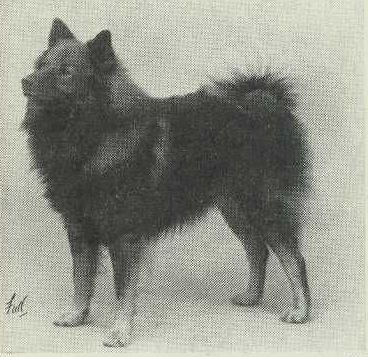Van Zaandam 1905-1971
- illugraphic01

- Jul 1, 2023
- 2 min read
Zaandam (Saardam in German) is a town in the municipality of Zaanstad in the Netherlands North Holland. Many lines of today's German Großspitz can be traced back to Keeshonds, whose breeding and propagation increased in popularity in the 1920's. One of the most famous breed names of that time was "Van Zaandam".
There were several breeders from Zaandam. But the kennel mentioned here was founded in England. The first Keeshonds were introduced to England in 1905 and for a time went by the name of "Dutch Barge Dogs" - this remained so until the Keeshond Club was formed 1925.

A key role was played by Mrs. Wingfield Digby. She visited Holland in 1905 and took the first two dogs to England: Dirk & Edam (van Zaandam). These laid the foundation for your successful breeding history. The granddaughter of Dirk & Edam Breda van Zaandam (born 08/20/1922) was successfully exhibited in 1923.
Young Saanie, born March 26, 1923 with her older sister Breda:

With the help of Miss Van der Blom, two more dogs Bartel van Zaandam and Tilly van Zaandam followed in 1925. The dogs had to spend six months in quarantine in kennels in Southampton. Bartel was bred by Mr. E. Schmidt from Sindelfingen near Stuttgart and was originally registered under the name Billo von der Maiblume.
Bartel was born on March 6th, 1923Father was Wächter von Zuffenhausen, born on July 15, 1916Mother was Agnes von der Maiblume, born on January 25, 1921.
Bartel received the first challenge certificate awarded by the Keeshond Club in 1929. The descendants of Bartel and Tilly included u. Karel van Zaandam and Gilda de Witt, both well-known dogs of their time.


Once the Keeshond Club was established, the breed quickly gained popularity. English breeders worked with German breeders to expand their gene pool. These exports became an important basis of the British Keeshond.

Dochfour Hendrik (a descendant of Bartels daughter Gesina) became the first English Keeshond Champion in 1929 under Mrs. Wingfield Digby. He sired many well-known winners and champions, such as Dochfour Sargo and Dochfour Jacob.

A critical comment by Mrs. Wingfield Digby on Dochfour Hendrik:
„He is an excellent dog. His posture and movements are perfect; his fur is beautiful; its ears are small and well set; he has dark eyes; a beautiful coloring; just to try to fault him, he's quite tall on his feet and the snout is a shade long and the glasses could be more clearly marked.

In the late 1920s the number of breeders in England increased.
Some larger breeders joined forces with other, lesser-known owners and smaller breeders. In 1926 there were just 33 dogs registered with the Kennel Club, two years later the number had risen to 131.

Mrs. Wingfield Digby later wrote a book about her breeding history, aptly named 'My Life with Keeshonden'.

An extensive illustrated archive covering the development of the Keeshond between 1920-1990 can be found at this page: http ://www.keeshondarchives.co.uk/
Sources:


Comments